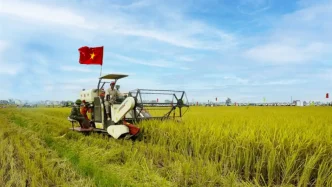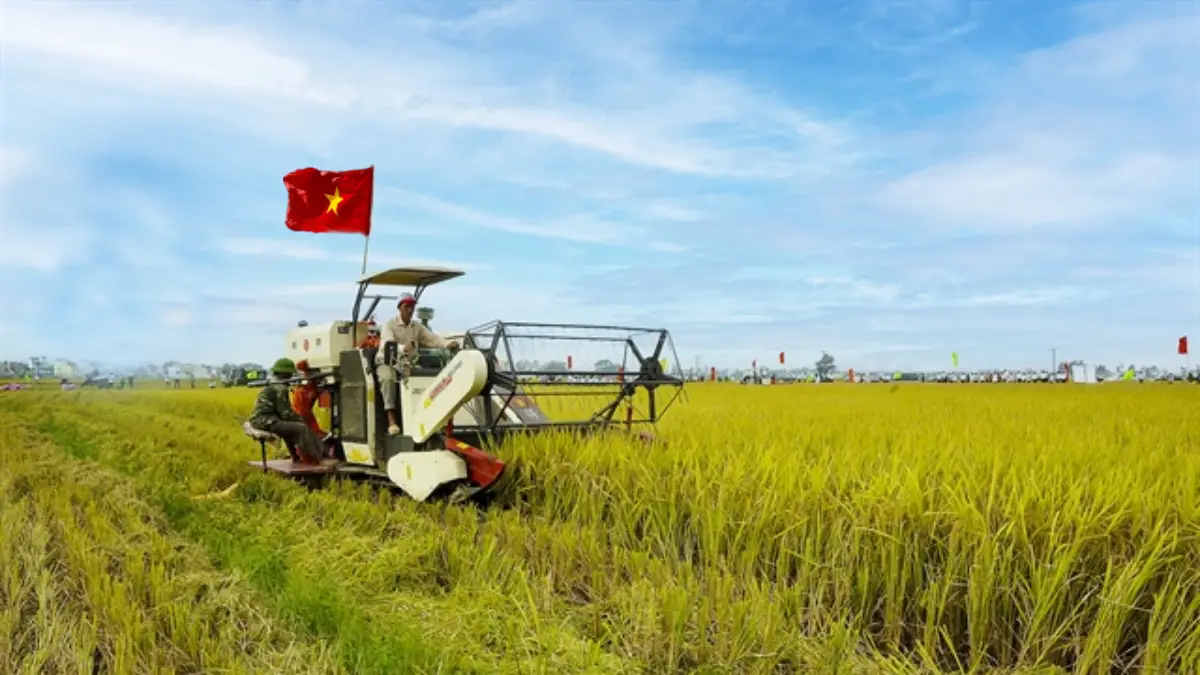In the heart of Vietnam, Hà Nội—often celebrated as the nation’s political and cultural epicenter—is undergoing a quiet yet profound transformation. Amid the pressures of rapid urbanization, climate change, and the urgent need for sustainable food security, the capital is reimagining its agricultural landscape. With over 44 percent of its land still dedicated to farming, Hà Nội is leveraging this resource through innovative zoning strategies and green agricultural practices, aiming to create a model of modern, eco-friendly farming that could inspire cities across the region.
A Vision of Green and Sustainable Agriculture
Hà Nội’s agricultural restructuring is not merely a policy adjustment; it is a strategic response to some of the most pressing challenges of the 21st century. The city has long pursued a vision of agriculture that is “green, efficient, and sustainable,” according to Nguyễn Xuân Đại, director of the Hà Nội Department of Agriculture and Environment. This approach redefines farming as more than an economic activity—it positions agriculture as a critical tool for environmental protection, food security, and ecological balance within an urbanizing landscape.
The restructuring involves a comprehensive overhaul of production zones, prioritizing the preservation of soil and water resources, the protection of natural habitats, and the reduction of greenhouse gas emissions. It also seeks to bolster resilience against climate change, a growing concern in a region vulnerable to extreme weather patterns. Over recent years, Hà Nội has made significant strides in this direction, particularly in crop cultivation and livestock farming, setting a benchmark for sustainable urban agriculture.
Transforming Crop Cultivation with Technology and Organic Practices
One of the cornerstones of Hà Nội’s agricultural revolution is the transformation of crop cultivation. The city has embraced organic and high-tech farming methods to enhance productivity while minimizing environmental impact. Currently, over 523 hectares of vegetables are grown using organic or near-organic practices, yielding an impressive 50 tonnes per hectare annually—15 to 20 percent higher than conventional methods. Additionally, 908 hectares of vegetable farms employ advanced technologies such as greenhouse systems and drip irrigation, improving product quality and conserving resources.
This shift is not just about output; it’s about sustainability. By optimizing land use and adopting advanced technologies, Hà Nội is focusing on high-value crops suited to the unique conditions of peri-urban soils. Irrigation-challenged rice fields, for instance, are being converted to more economically viable crops, ensuring that agricultural practices align with both environmental and economic goals.
Innovations in Livestock and Circular Farming
In the livestock sector, Hà Nội is pioneering circular farming practices designed to reduce emissions and enhance environmental safety. Many farms now operate with closed-loop barn systems, automated feeding technologies, and biological waste treatment measures. A striking 95 percent of large-scale pig farms utilize biogas systems, while 65 percent of livestock facilities employ biological agents to manage waste. These innovations ensure compliance with stringent technical standards and support a gradual shift away from small-scale, backyard farming in densely populated areas.
The city is also strategically planning to establish large-scale livestock zones in rapidly urbanizing districts while phasing out smaller operations in residential areas. This aligns with local regulations, such as Resolution No. 02/2020/NQ-HĐND of the Hà Nội People’s Council, which mandates the cessation of livestock farming in certain zones and supports the relocation of facilities in restricted areas.
Urban Agriculture and Experiential Tourism
Beyond traditional farming, Hà Nội is crafting a unique model of urban agriculture that blends high-tech practices with experiential tourism, particularly in peri-urban areas. This innovative approach transforms agricultural land into smart ecological spaces that not only boost local food production but also enhance farmers’ incomes and meet the demands of a growing urban population.
In Tam Hưng Commune, for instance, Party Secretary Bùi Văn Sáng highlights the area’s potential for green, ecological, and circular agriculture. With its deep-rooted farming traditions, the commune is establishing specialized production zones for vegetables, ornamental plants, fruit trees, and aquaculture. Local authorities are restructuring agricultural spaces to focus on concentrated, eco-friendly, and high-tech models while improving land-use management to align with broader socio-economic development goals.
Similarly, in Hồng Vân Commune, agriculture is being woven into the cultural and tourism fabric. Chairman of the People’s Committee Lê Tuấn Dũng notes that the commune, already a recognized tourism destination, has developed flower-lined roads and green corridors to support agri-tourism initiatives. These efforts cater to urban residents seeking sustainable and authentic experiences while aligning with global trends in eco-tourism. Agriculture here is seen as a key element in shaping the landscape, preserving cultural identity, and laying an ecological foundation for integrated development across tourism, services, and culture.
Policy Frameworks and Long-Term Vision
Hà Nội’s green agricultural zoning efforts are underpinned by robust legal and strategic frameworks. Nguyễn Mạnh Quyền, Vice Chairman of the Hà Nội People’s Committee, emphasizes that the city is aligning its initiatives with key policies such as the Capital Law, passed on June 28, 2024, and Decision No. 1668/QĐ-TTg dated December 27, 2024, which approves adjustments to Hà Nội’s General Planning toward 2045 with a vision to 2065. These frameworks have enabled the city to review and adjust designated zones for crop cultivation, livestock farming, and aquaculture to reflect real-world conditions.
Through these policies, Hà Nội is re-establishing its ecological spatial system, positioning agriculture as green infrastructure that serves as both a food belt and an ecological buffer zone. This integrated approach is seen as essential for ensuring agricultural economic development, maintaining ecological landscapes, improving quality of life, and strengthening climate resilience.
Looking Ahead: A Green Urban Future
Hà Nội has set an ambitious target for the 2030–2045 period: to become a fully green urban area where ecological agriculture forms the backbone of an interconnected system uniting land, people, and nature. This vision includes optimizing land use, adopting cutting-edge technologies, and developing high-value products across all agricultural sectors. In aquaculture, for instance, the city is focusing on high productivity and quality while protecting aquatic ecosystems, adapting to climate change, and ensuring food safety from production to consumption.
Moreover, Hà Nội is embedding green, clean, and sustainable agricultural methods into training programs that bridge theoretical learning with local practice. These initiatives aim to equip farmers with the knowledge and technical skills needed to thrive in the new agricultural economy, ensuring that the benefits of this transformation are widely shared.
Regional zoning tied to green agricultural development represents a timely and strategic initiative for Hà Nội as it navigates the challenges of urbanization and environmental change. Beyond enhancing production efficiency and ensuring food safety, this approach fosters the creation of ecological zones and improves living conditions, contributing directly to the city’s broader goal of sustainable urban development.
As Hà Nội continues to shape a modern, environmentally responsible agricultural identity, questions remain about the scalability of these initiatives and their long-term impact on both rural and urban communities. Can this model of green agriculture serve as a blueprint for other rapidly urbanizing cities in Southeast Asia? Only time will tell, but for now, Hà Nội is planting the seeds of a sustainable future—one that balances growth with ecological harmony.
















